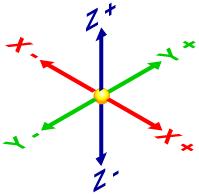Motion Control
Products are nearly always manufactured using machines, either operated by humans or computer numerically controlled (CNC). Machines are used to cut, shape, assemble and join materials. The quality of machined parts is dependent on how well the tool that is doing the cutting, shaping, assembling or joining is controlled and also how well the material that is being machined is controlled.
One common way of controlling the way that parts of a machine move is by using long screws called lead screws. A lead screw is held in a fixed position on a machine but it can be rotated. As the lead screw is rotated, it moves the part of the machine that is attached to it. A machine tool may have three or more lead screws moving various parts of the machine along slide ways, e.g.
|
|
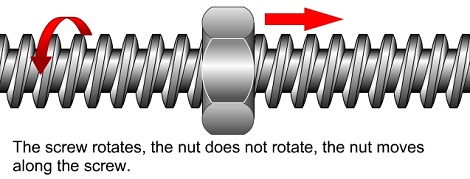 |
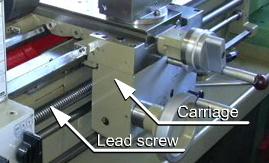 |
The diagram above left illustrates a lead screw that is made to rotate but the nut is prevented from rotating. When the lead screw rotates and the nut is prevented from rotating, the nut travels along the lead screw. When the nut is attached to a carriage or machine table, the carriage or machine table is moved when the screw is rotated. This is the principle used to move the milling machine table illustrated below and the lathe carriage illustrated above.

Hand wheels are used to turn the lead screws that control the movement and position of the top slide and cross slide on manually operated milling machines. On computer numerically controlled (CNC) milling machines, the hand wheels are replaced by servo motors. The servo motors are connected to lead screws that move the machine table through the X, Y and Z axes.
Backlash
Backlash is the axial movement between a screw and nut. The movement is caused by the gap between the screw threads of the screw and nut.
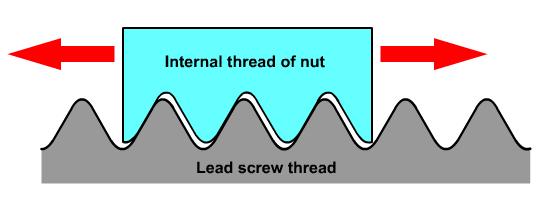
Backlash may not be important when the screw is used for clamping but when used for controlling the movement of machine parts, backlash is a very important consideration. This is because any backlash between the screw and the part of the machine that the screw is controlling will lead to inconsistent movements of that part.
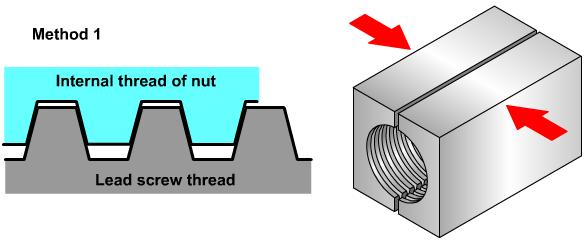
One way that backlash may be eliminated is by using a split nut that can be closed tightly around a lead screw. The "V" form of the screw thread closes gaps between the threads of the screw and nut. Method 1 above illustrates how a split nut is used to reduce backlash on a lathe lead screw. This type of split nut is also used to engage and disengage the lead screw on a lathe.
The diagram below illustrates one type of anti backlash nut. This design consists of two nuts with a spring between them that forces the nuts apart and against opposite faces of the lead screw thread. This prevents movement forwards and backwards.
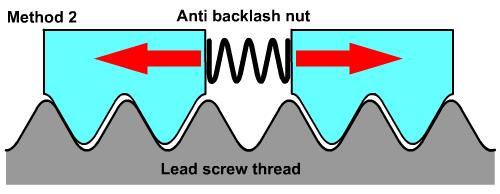
The diagram below illustrates another type of anti backlash nut. This design consists of two nuts that are bolted together with a special spacer between them. The bolt holds the two nuts against the opposite flanks of the lead screw and the spacer prevents the two nuts from being over tightened and seizing on the screw.
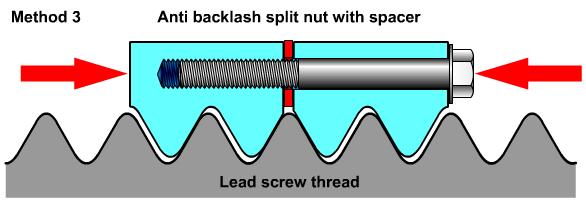
|
||||
